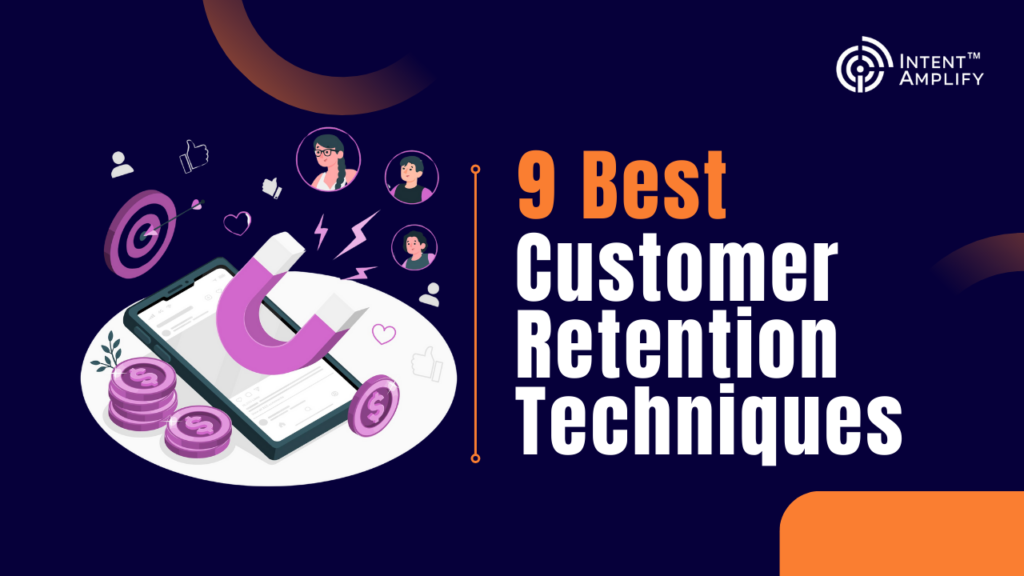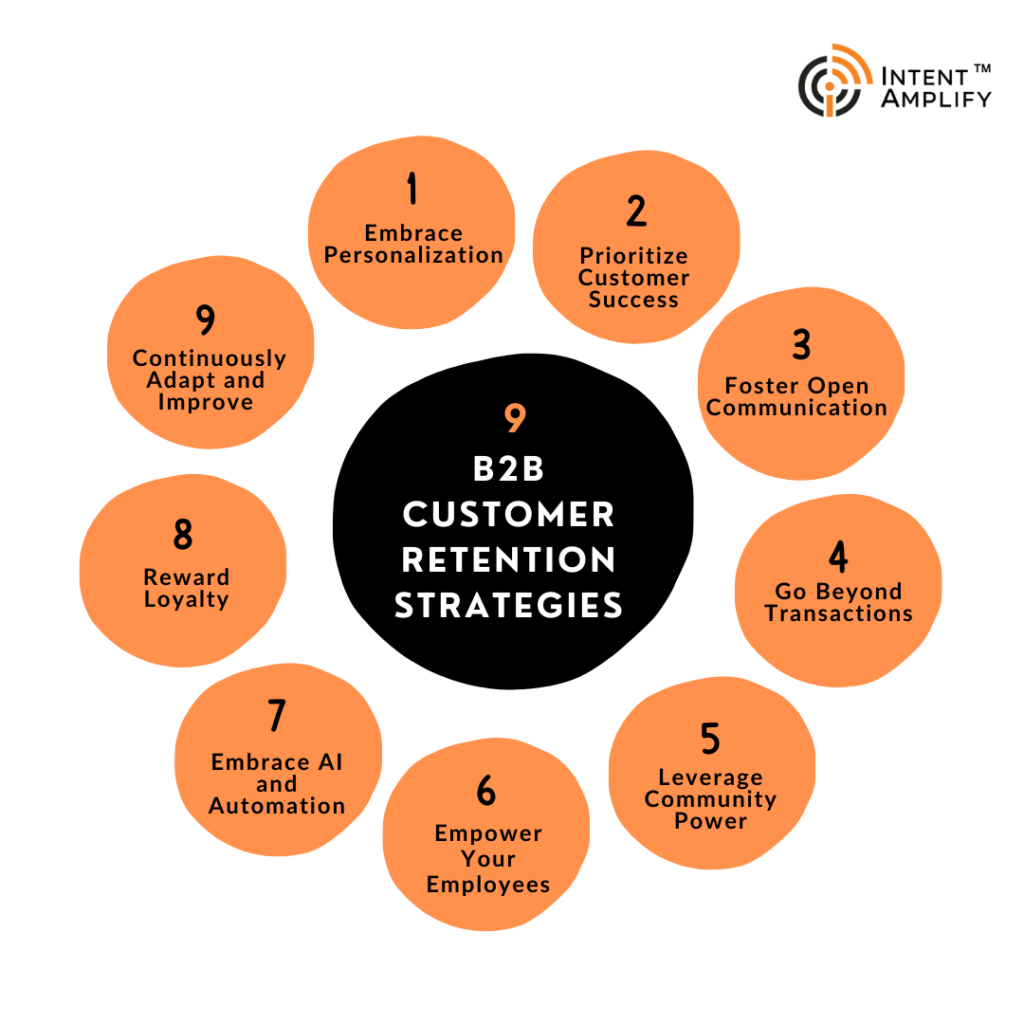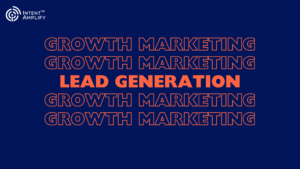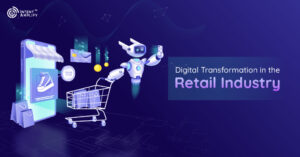
Top 9 Strategies To Retain B2B Customers in 2024
B2B sales is a world of aggressive competition; as such, acquiring new customers can feel like a constant uphill battle. Unlike B2C, A B2B customer is achieved after several meetings, follow-ups, discussions, and several levels of decisions. Hence, it is no news that B2B businesses hold special importance in not letting go of existing customers.
But did you know that retaining existing customers is often five times more cost-effective than acquiring new ones? That’s why, in 2024, focusing on fostering customer loyalty and preventing churn should be a top priority for any B2B business. But how do you stand out in an increasingly competitive landscape?
Here are the top 9 B2B customer retention strategies that must work for you in 2024:

1. Embrace Personalization: We are definitely ahead of the one-size-fits-all days. Today, with the excess of data and technology at our perusal, we can hyper-personalize the customer journey at every touchpoint, from initial onboarding to ongoing interactions. Offer customized recommendations, proactive support, and exclusive deals to make each customer feel valued and understood.
2. Prioritize Customer Success: Your success relies on theirs. Invest in dedicated customer success programs that proactively identify and address potential issues, provide ongoing training and support, and actively measure customer satisfaction. Remember, happy customers are loyal customers.
3. Foster Open Communication: One of the key strategies to retain B2B customers in 2024 is to break down communication barriers. Encourage regular feedback through surveys, interviews, and dedicated communication channels. Listen actively to understand customer needs and proactively address concerns. Transparency and open communication build trust and strengthen relationships.
4. Go Beyond Transactions: Building relationships goes beyond closing deals. Engage with your customers beyond the point of purchase. Host interactive webinars, industry events, or exclusive networking opportunities to create a sense of community and reinforce the value you provide.
5. Leverage Community Power: Communities foster engagement and create brand advocates. Establish online communities where customers can connect, share best practices, and offer peer-to-peer support. Encourage user-generated content and customer testimonials to showcase the value you deliver.
6. Empower Your Employees: Remember, your employees are often the frontline of customer interactions. Equip them with the training, resources, and authority to resolve issues promptly and deliver exceptional service. Empower them to go the extra mile and create memorable customer experiences.
7. Embrace AI and Automation: Technology can be your ally in retention efforts. Use AI-powered chatbots for 24/7 support, automate personalized communication based on customer behavior, and leverage data analytics to predict potential churn and intervene proactively.
8. Reward Loyalty: Showing your customers that you appreciate their continued business has been an undermined strategy of B2B customer retention. Implement loyalty programs with tiered rewards, offer exclusive discounts or early access to new features, and personalize offers based on customer preferences and purchase history.
9. Continuously Adapt and Improve: The customer landscape is constantly evolving. Regularly evaluate your retention strategies, track key metrics like customer lifetime value and churn rate, and be prepared to adapt and improve based on data insights and customer feedback.
Customer retention is an ongoing process. By implementing these strategies and cultivating a customer-centric culture, you can build long-lasting relationships, reduce churn, and unlock sustainable growth for your B2B business in 2024 and beyond.
Why is customer retention Important in B2B?
Repeat business is crucially important in B2B for several reasons:
- Cost-effectiveness: Acquiring new customers is typically 5-10 times more expensive than retaining existing ones. By nurturing existing relationships and encouraging repeat business, companies save significantly on acquisition costs.
- Higher profitability: Loyal customers tend to spend more over time, increasing the average customer lifetime value (CLTV) and boosting overall profitability. They also require less sales and marketing effort, further contributing to financial gains.
- Predictable revenue: With a reliable base of returning customers, businesses can forecast revenue more accurately, making it easier to plan for growth and investments.
- Stronger relationships: Repeat business often indicates trust and satisfaction, leading to deeper relationships with clients. This open communication and stronger bonds benefit both parties in the long run.
- Positive brand reputation: Loyal customers who advocate for your brand can be powerful marketing tools, attracting new business through positive word-of-mouth and testimonials.
- Reduced churn: Retaining existing customers helps combat churn, which can be disruptive and costly. By addressing potential issues proactively and focusing on customer satisfaction, businesses can minimize customer loss.
Case Studies of Companies Implementing Successful B2B Customer Retention Strategies
Customer retention is the lifeblood of any B2B company, and successful strategies can vary widely depending on your industry and target audience. But seeing concrete examples of how leading companies are achieving success can be incredibly inspiring and informative. Here are a few real-world B2B customer retention strategies that worked well:
1. Zoominfo:
ZoomInfo is a publicly traded Software as a Service (SaaS) company that specializes in providing access to its extensive database of millions of contacts for recruiting, sales, and marketing teams. ZoomInfo has achieved an impressive customer retention rate of 98.5%, and this success is attributed to their unique strategy of using education and training to build and maintain relationships with their user base.
ZoomInfo’s education interventions include various formats such as live webinars, on-demand training, private training, and a certification program. Notably, they shifted live, in-person training from the onboarding process to three months prior to renewal. This adjustment proved beneficial for both the customer and ZoomInfo, allowing customers to ask informed questions and streamline their processes.
The combination of these strategic steps has contributed significantly to ZoomInfo’s remarkable retention rate, showcasing the effectiveness of their customer education initiatives in enhancing customer satisfaction and engagement throughout the customer lifecycle.
2. ICON:
ICON creates tailor-made outsourcing solutions. It uses a combination of cutting-edge technology and A-player human resources to deliver leading inside sales and account management solutions for B2B brands. It focuses on delivering exceptional inside sales and account management services for B2B (business-to-business) brands. The key emphasis of ICON’s success lies in prioritizing customer experience to drive growth. The company employs a systematic approach that includes gathering feedback through engaging relationship surveys twice a year, taking action with a 100% response rate and personalized customer-centric action plans, and collaborating with customers through 90-day action plans to foster deeper loyalty and advocacy.
The customer retention rate is an impressive 98.8%, and a substantial 80% of the business comes from referrals, cross-sells, and upsells. This information underscores the importance of a customer-focused strategy in driving business success and growth for ICON.
These are just a few examples, but they highlight the importance of understanding your customers, offering them value beyond the initial purchase, and continuously adapting your strategy. By learning from these successes and tailoring them to your specific context, you can tap the potential of retaining B2B customers and drive sustainable growth for your business. Hope you enjoyed reading the strategies to retain B2B customers in 2024 and surely implementing them will show promising results.




